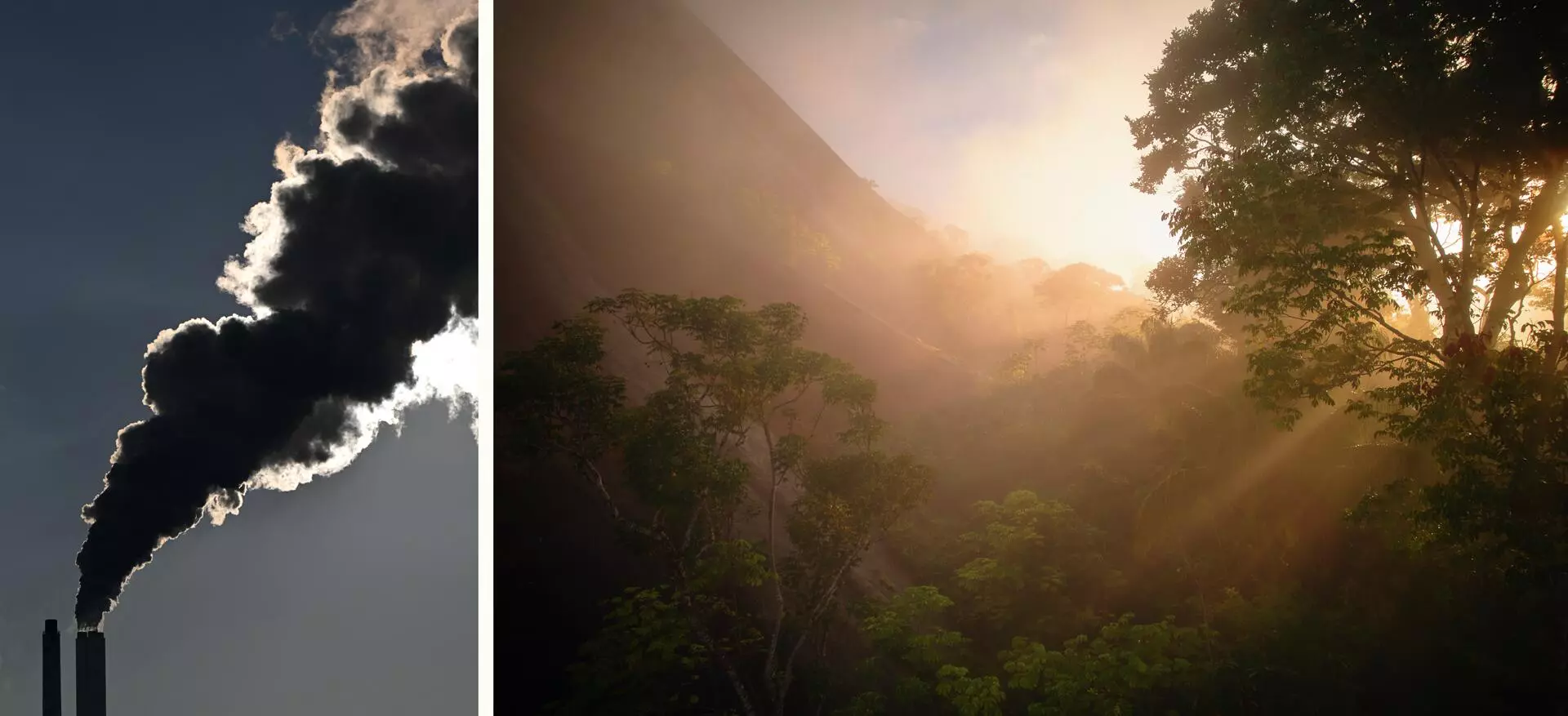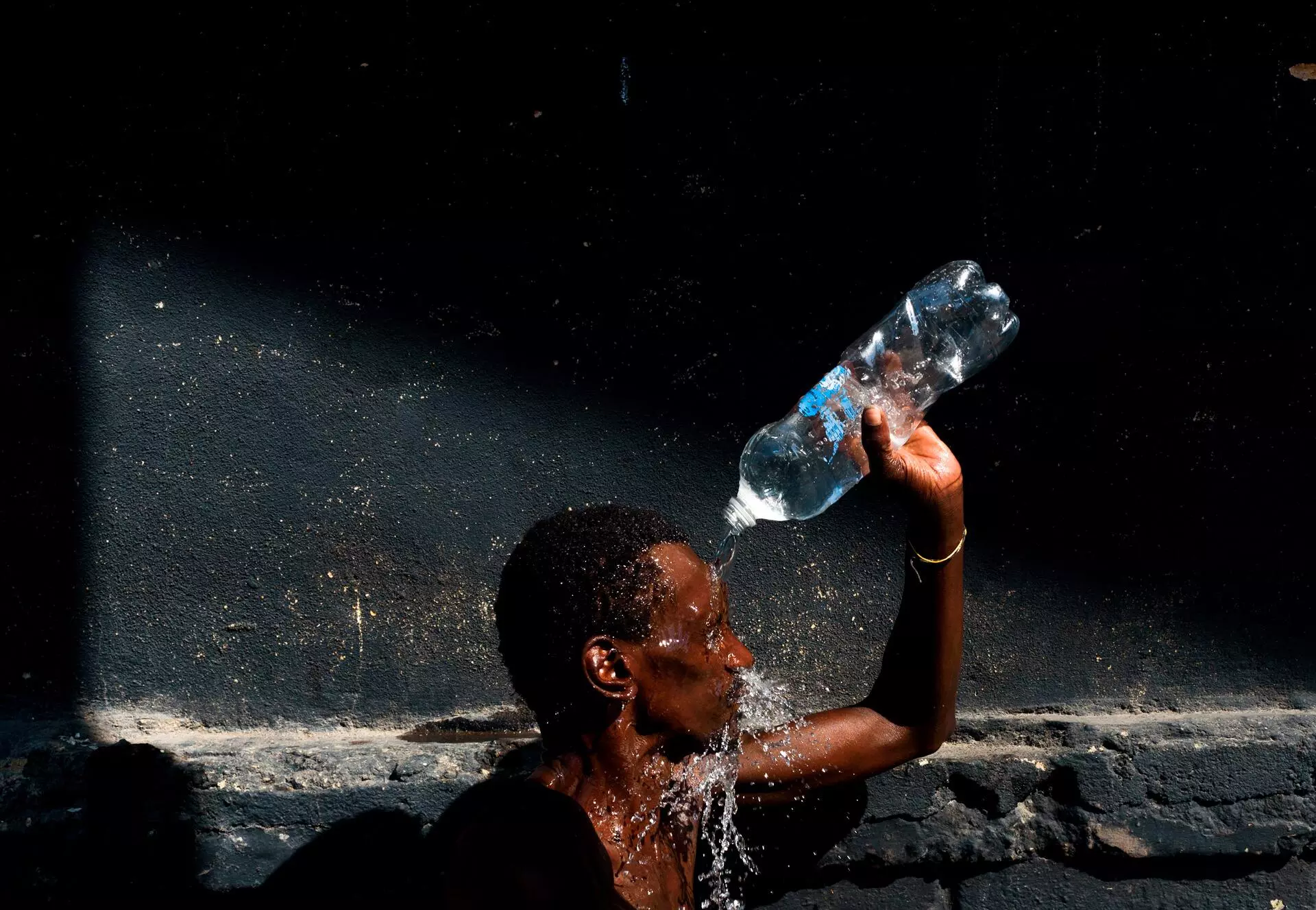If life on Earth is wiped out, it won’t be for lack of warning. Many scientific reports presented at this year’s United Nations Climate Change Conference, COP28, once again confirmed the link between the planet’s rising temperature and the mounting incidence of prolonged droughts, violent storms, and flooding. One of these reports, released on December 5 in Dubai, is the Global Carbon Budget, which provides an annual measure of the atmospheric concentration of carbon dioxide (CO₂), the main greenhouse gas. Among other data, the study shows how global heating is gradually stripping nature, especially rainforests like the Amazon and the oceans, of the capacity to absorb much of the CO₂ produced by humans.
It is a circular relationship. Preserved nature helps contain the rise in the planet’s temperature, which is caused by the destruction of biomes and especially by the use of the fossil fuels that pour CO₂ into the atmosphere. Global heating, in turn, changes how ecosystems function. From 2013 to 2022, land sinks such as soils and, primarily, forests, lost 20% of their capacity to absorb and store CO₂ from the atmosphere, while ocean sinks lost 7%, as estimated by the Global Carbon Budget (GCB). “This is entirely caused by climate change. It’s an indirect process, unlike deforestation,” Pierre Friedlingstein told SUMAÚMA. As coordinator of the GCB, Friedlingstein, who is also a professor of Mathematical Modeling of the Climate System at the University of Exeter, in Great Britain, presented the latest study at Dubai during COP28.
Published since 2007, the GCB currently has the participation of 121 scientists representing 95 organizations in 17 countries, including MapBiomas—a Climate Observatory project that monitors forest cover in Brazil—and the Brazil National Institute for Space Research (INPE). The study released at COP28 demonstrates that, despite warnings, humans persist in actions that will push the planet’s average temperature beyond 1.5C over pre-Industrial levels. If the current emission level is maintained, chances are 50/50 that this limit will be breached by the end of the decade, which could make life on the planet unsustainable, said Friedlingstein.
The report projects that global carbon emissions will reach 40.9 billion metric tons in 2023, compared to 40.7 billion metric tons in 2022. Of these, 90%, or 36.8 billion metric tons, come from the burning of fossil fuels—oil, gas, and coal—by the transportation, power generation, and industrial sectors. The study also estimates that the concentration of CO₂ in the atmosphere today is 51% higher than in the pre-Industrial era. This concentration would be even greater if nature were not still absorbing around 55% of CO₂.

Circular impact on nature: Preserved forests curb global heating, but high temperatures affect ecosystems. Photos: Sebastien Bozon/AFP & Pablo Alvarenga
Friedlingstein said this situation calls for “drastic measures” to tackle climate change—not just giving up. “This would be the worst outcome, not only for this conference, but for the world and for future generations,” he said. The scientist, who has been on the United Nations’ Intergovernmental Panel on Climate Change (IPCC) since 1994, is also research director at the Dynamic Meteorology Laboratory, a joint research unit of the French National Centre for Scientific Research. Below are the main excerpts from the interview.
SUMAÚMA: A noteworthy finding of the study is that from 2013 to 2022, the world’s forests lost 20% of their capacity to absorb CO₂. Could you please explain that?
Pierre Friedlingstein: Globally, land systems in general, but especially forests, absorb 25% to 30% of the carbon dioxide released into the atmosphere. The oceans absorb 25%. About 45% of our CO₂ emissions stay in the atmosphere. If land didn’t absorb so much, the CO₂ concentration would be much higher, and climate change would be having even greater consequences already. Absorption increases along with the increasing CO₂ concentration. There’s more photosynthesis, more biomass growth, and that’s why we talk about carbon “sinks.” But the problem is that the increase in CO₂ concentration also leads to climate change, and climate change leads to a reduction in these carbon sinks.
How does this happen?
It’s an indirect process, unlike deforestation, which is a direct action [by humans]. There are two reasons for this reduction in carbon sinks. The first is that global warming increases soil organic carbon decomposition—microbes are more active at higher temperatures—hence releasing more CO₂ into the atmosphere. We see this phenomenon everywhere, at middle and high latitudes [closer and farther from the Equator]. Carbon is released by the melting of the permafrost [a permanently frozen layer of the subsoil, as in the Arctic]. The second reason is that warming causes more frequent heat waves, droughts, and forest fires, leading to less carbon storage in biomass—like the wildfires we’ve seen this year in Canada, and before that in Australia and southern Europe. With the fires, more carbon is released into the atmosphere. So this is important, and it is entirely caused by climate change. When we tried to measure how much this represents, [we saw that] it’s about 20% of its natural sink capability. So the land is still absorbing a good fraction of emissions, but it would absorb even more if there were no warming.
So oceans have lost 7% of their capability, according to estimates?
The oceans are losing this capability as well, because of different physical processes. Essentially, a warmer ocean can absorb less CO₂, because CO₂ solubility is reduced in warmer water. In addition, a warmer ocean reduces large-scale oceanic circulation [the movement of currents], in turn reducing the export of carbon from the surface to the deep ocean. Both factors mean there is more CO₂ at the surface and therefore less atmospheric CO₂ is absorbed by the ocean. The ocean would also remove more emissions if there were no climate change.
Did you take into account the reduction in deforestation in Brazil this year?
Yes. For Brazil, we have very good estimates at a national level from the project called MapBiomas. We also have a partnership with INPE. They measure forest cover, including the Amazon rainforest. Now they’re doing the same in Indonesia and are trying to expand to other big countries near the tropics, which are responsible for most deforestation. If we look at Brazil, the country is still number one in CO₂ emissions from deforestation. Number two is Indonesia, not very far behind Brazil, because the trend in Brazil is to decrease, and number three is the Democratic Republic of the Congo. Globally, deforestation is decreasing; we see a long-term downward trend of about 1% per year, which is not much given the pledge to end deforestation by 2030, a promise made by many countries [including Brazil] at COP26 in Glasgow.
Based on the GCB, you conclude that we will exceed the limit of 1.5C by the end of this decade. Is there still time to prevent this? What needs to be done?
We should be doing our utmost. Even if I say it seems too late for [holding the rise to] 1.5C, this doesn’t mean we should just give up and do nothing. That would be the worst outcome, not only for this conference, but for the world and for future generations. We have to reduce emissions as fast as possible. We say 1.5C is almost inevitable because the IPCC [UN Intergovernmental Panel on Climate Change] estimates how much carbon we can release into the atmosphere before we get there. And there is a 50/50 chance this will happen if emissions remain at 2023 levels for another seven years. Of course, this is mainly fossil fuels, which account for 90% of total emissions.
And if we surpass 1.5C, would that be reversible?
If we don’t hold it to 1.5C, we will hopefully hold it to 1.6C or 1.7C. And then maybe we will find ways to remove CO₂ from the atmosphere, but that’s a huge challenge. We do this now through reforestation, which is already happening in some parts of the world. But at the moment, reforestation corresponds to only half of the amount we lose through land-use change [which includes deforestation and agriculture]. We have to increase reforestation massively, but I don’t think we can do this enough to offset current emissions. So we have to drop emissions enough to get to net zero [when nature is able to absorb all greenhouse gases released into the atmosphere]. If we get very close to net zero, we will need to absorb the remaining emissions, which can’t be avoided by some sectors. This means we will need negative emissions [when nature absorbs more than what humans emit]. So if you want to reverse and go from 1.7C back to 1.5C, you not only have to have negative emissions to offset positive emissions from, for example, aviation or agriculture, but you’ll have to have even more negative emissions, to remove even more. I’m not certain massive reforestation would be enough, so we would need to rely on technologies like direct air capture, which right now represent a very tiny fraction of emissions.
Would the key measure for avoiding a 1.5C increase be a drastic reduction in the use of fossil fuels?
Yes. We have to reforest as well but, given that fossil fuels account for 90% of total emissions, this would be the number one target. The question is when, how quickly, can we do it? If we manage to eliminate fossil fuels in the next 10, 15, 20 years, we might still stay below 1.5C. If it takes another decade, we will reach 1.7°, and another decade, 2C. But we have to bring emissions down to zero.
What would be the effects of reaching 1.6C or 1.7C, in terms of extreme climate events?
We’re already seeing these effects today. It’s not that the world is safe now because we’re below 1.5C. We’re experiencing lots of extreme events already, like the heat waves in southern Europe last summer and floods in many countries. These extreme events are increasing in intensity and frequency compared to the climate in the pre-Industrial era. With 1.5C, they would increase more; with 2C, even more; and with 3o, ten times more. Every tenth of a degree matters. We have to hold warming to the lowest level possible. We know that.
Our coverage in Dubai is in partnership with Global Witness (@global_witness), an international NGO that has been investigating, exposing, and campaigning against environmental and human rights abuses around the world since 1993
Report and text: Claudia Antunes
Fact-checker: Plínio Lopes
Proofreader (Portuguese): Valquíria Della Pozza
Spanish translation: Julieta Sueldo Boedo
English translation: Diane Whitty
Photo editor: Lela Beltrão
Layout and finishing: Érica Saboya
Editors: Malu Delgado (news and content), Viviane Zandonadi (editorial workflow and copy editing), and Talita Bedinelli (editor-in-chief)
Director: Eliane Brum

More frequent, more intense heatwaves: Resident of a low-income neighborhood in Rio de Janeiro cooling off in summer. Black, low-income, and Indigenous people suffer the most. Photo: Fabio Teixeira/AFP





